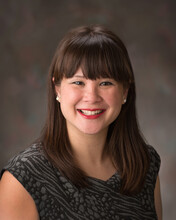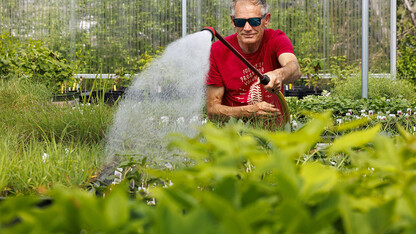· 4 min read
In-house contact tracing team aids in Huskers’ safe return to campus

In just a few weeks, the University of Nebraska–Lincoln has processed over 30,000 COVID-19 saliva tests from members of the campus community.
The vast testing effort is the result of months of preparation, with facilities workers constructing custom testing stations, students signing up to collect samples and serve as “wellness attendants,” and Huskers of all kinds assembling 50,000 testing kits.
In January, Nebraska also expanded its in-house contact tracing team, comprised of 50 faculty and staff volunteers. The group has played a critical role in tracking positive cases as the semester begins.
“We’ve already done more saliva tests since we started a couple of weeks ago than all of the testing that was done in the fall semester. It was a huge jump, and we knew we needed to be well-prepared,” said Tony Rathgeber, assistant director of housing and co-leader of Nebraska’s Public Health Advisory Team.
“The time-sensitive nature of contact tracing is really key, and we felt we could probably respond faster to students than the county could, knowing that they’re dealing with so many other cases all across Lincoln. We also felt it would be beneficial due to the familiarity we already have with campus. It allows us to take a more customized approach.”
The volunteer contact tracers come from all corners of campus, including Student Affairs, academic colleges and a variety of other units.
“There are some folks who have had some of their regular work responsibilities suspended due to the pandemic, and they’ve been redeployed for part of their hours to work with the Public Health Advocacy Team,” Rathgeber said. “There are other people who didn’t necessarily have any of their work suspended — they’ve just taken this on in addition to their regular duties.”
All volunteers are required to complete extensive training before beginning contract tracing, including a general introduction course from John Hopkins University and one that introduces them to Nebraska-specific rules and procedures.
The team focuses on identifying exposure solely on campus, while the Lincoln-Lancaster County Health Department follows up with individuals separately to inquire about community exposure.
“We’ve developed this system with them so they have confidence in the contact tracing we’re doing in those areas, and we have confidence knowing that they’re covering everything else,” Rathgeber said.
When contacting someone who has tested positive, volunteers ask about three primary instances of potential close contact: roommates, classes and on-campus jobs. Rathgeber estimates that they’re able to reach out to most positive cases within six to eight hours of being notified, made possible through multiple volunteers scheduled seven days a week.
Justina Clark, director of undergraduate research, is one of the staff members volunteering as a contact tracer this semester. Clark was motivated to take on the role after she and her husband contracted COVID-19 last summer.
“I want to be a voice of compassion and care for students who are going through what we did,” Clark said. “I hope that I can connect on a human level with the cases I call. While everyone’s symptoms and experiences are different, just being able to say ‘Hey, I’ve been there and we’re thinking of you’ seems to make students feel better.”
Rathgeber echoed that sentiment, as well.
“I think that any of our contact tracers can probably point to conversations that they’ve had with students where that student is really concerned about their recent positive test. They’re concerned about others they may have infected, and they’re concerned about what that means for them academically,” he said. “The thing to me that’s really positive is that we have staff who really care a lot about students, and they’re there to have that conversation with them, put them at ease and give them good information.”
Thanks to the low positivity rate on campus, the team’s work has slowed down slightly. But, Rathgeber said volunteers will continue to be ready and working throughout the spring.
“For the rest of this semester, and maybe beyond that, we’ll keep a team of contact tracers available to respond to any positive cases,” he said.









